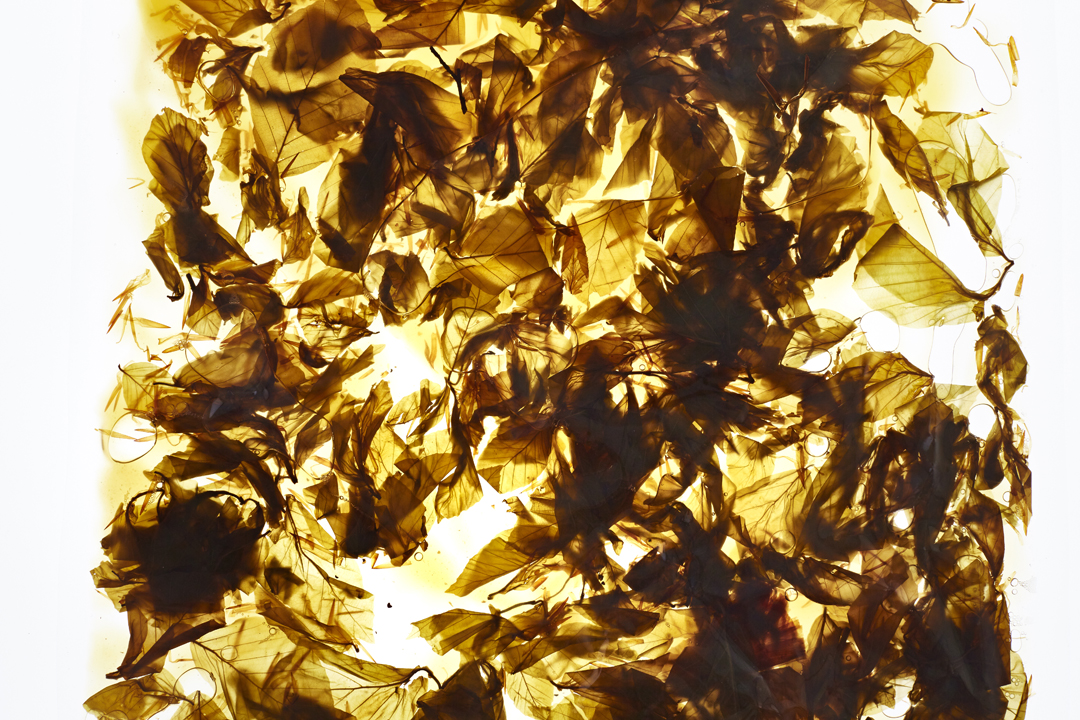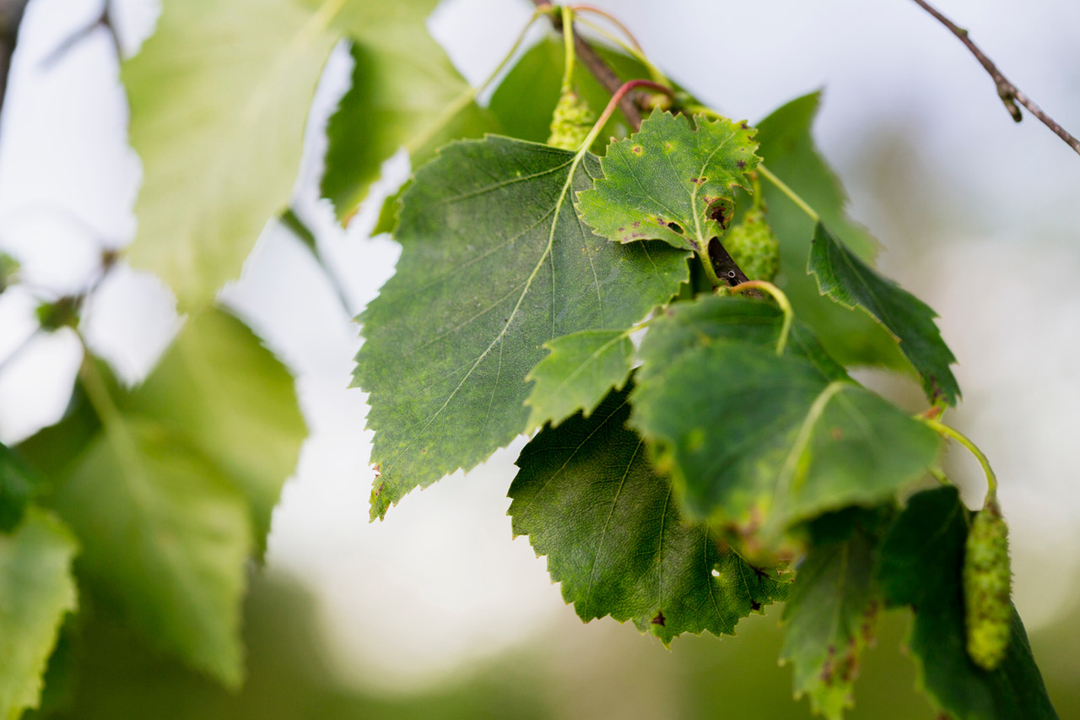
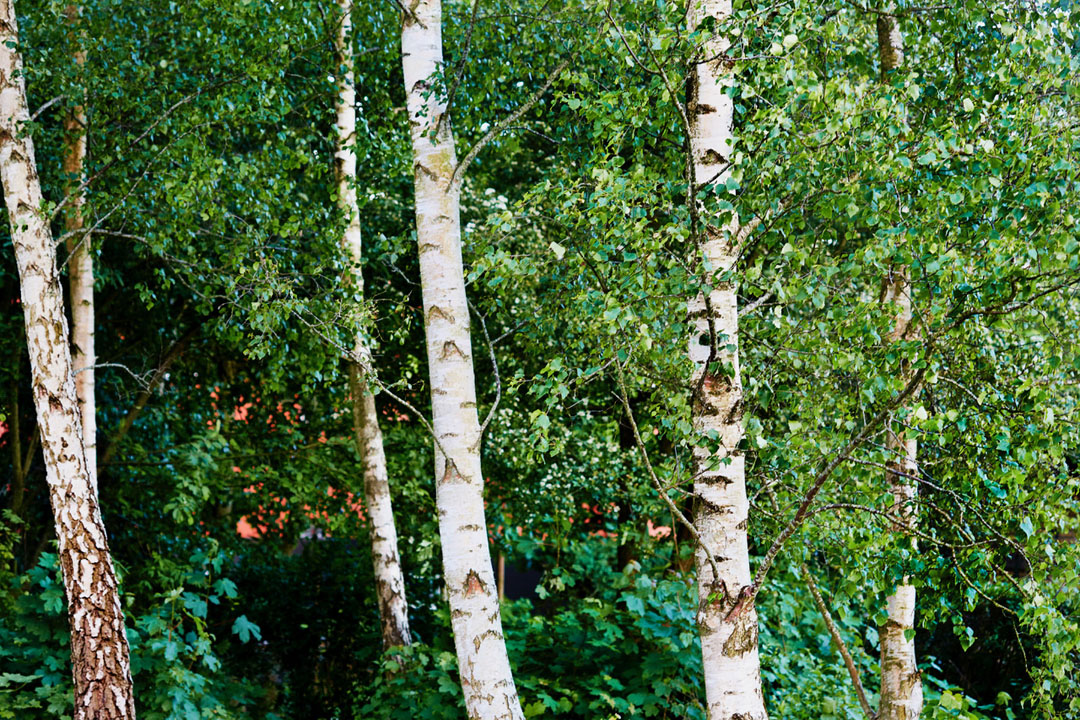
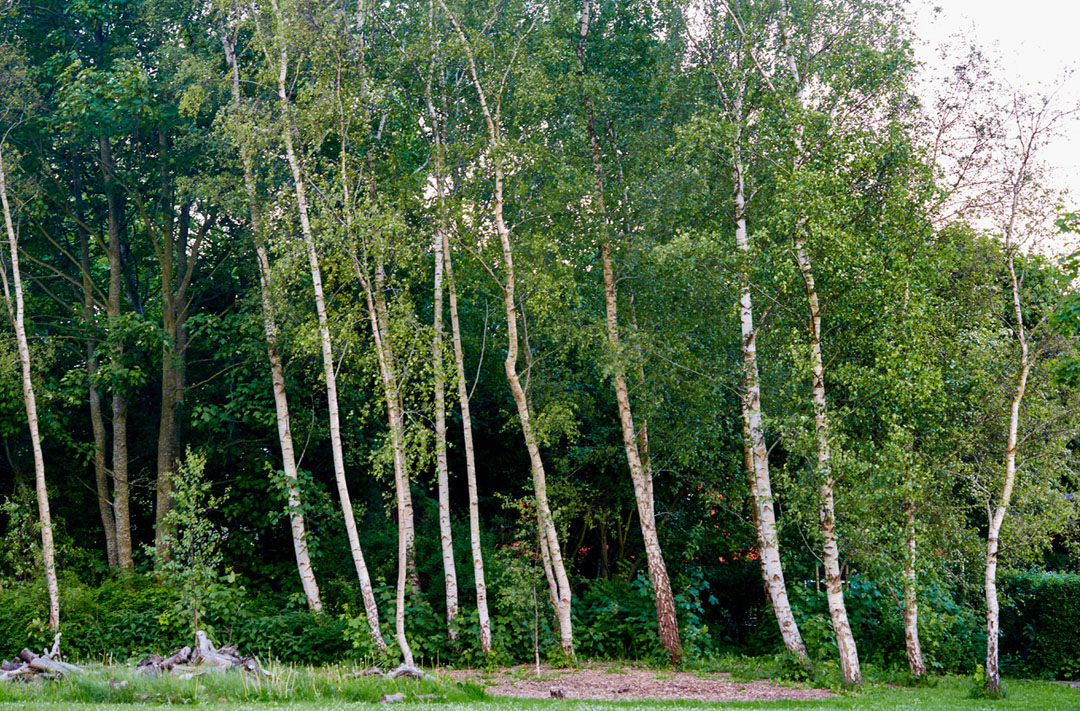
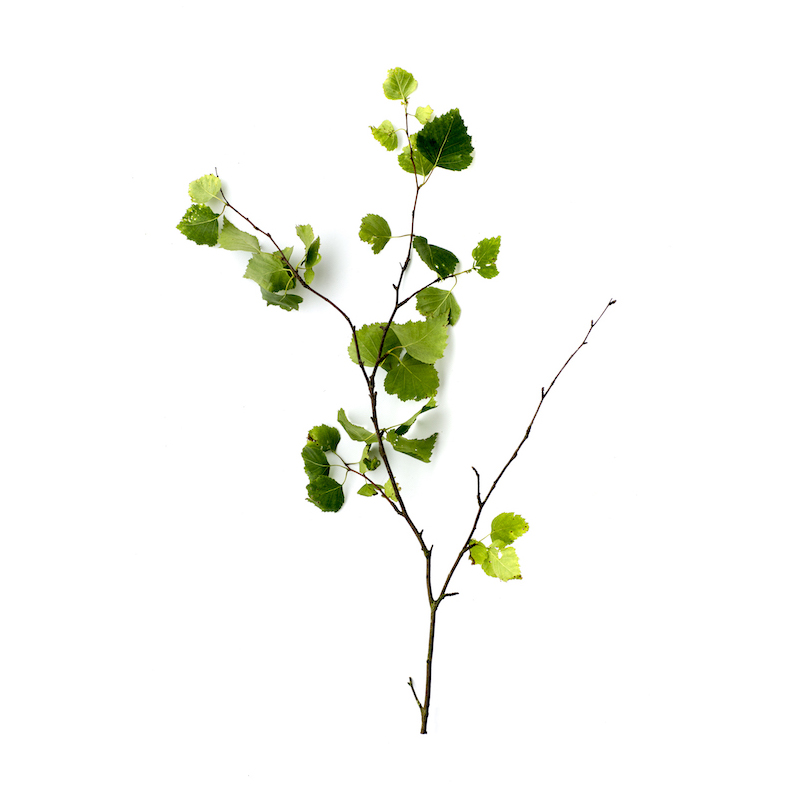
Birch
The birch tree has an impressive ability to absorb enormous amounts of water from the ground as soon as the snow and ice disappear. This liquid—birch sap—drips readily down into the gatherer's cups and bottles, and with its sweet birch flavor, it's an enchanting start to spring.
-
Where to Find It
There are two different kinds of birch in Denmark: downy birch and silver birch. Downy birch prefers moist ground, while silver birch looks for drier terrain. Neither of them can tolerate very much wind.
Deciduous forests, towns, hedges. -
When to Find It
Birch sap can be tapped from the time the frost has left the ground until the first leaves develop in April.
Juice: March.
-
How to Spot It
Birch trees grow 25-30 meters tall and are easily recognized by their white, grey, or light red bark. Downy birch has branches that bristle into the air; a thin layer of down coats its green twigs and the underside of its small, oval leaves. Downy birch can also develop what are called witch's brooms—tangled masses of branches that look like bird's nests. Silver birch has more reddish twigs and long, thin branches that hang down. A characteristic trait of the silver birch are the greyish-white, wart-looking growths on its branches that are called resin warts.
-
How to Pick It
You can easily tap birch sap by cutting a downward-hanging branch that's around a centimeter in diameter, putting the end of the branch in a bottle, securing it, and letting it hang for a few hours or overnight (depending on the level of tension in the tree). Or, you can drill a hole about a meter above the ground in an upward direction into the middle of the tree, rinse the hole with water, and plug into it a tube of nearly the same diameter. Point the tube down into a bucket set under the tree, and wait for it to fill with fresh birch sap. Put a stopper in the hole when you're done tapping the birch tree so it doesn't over-expel its sap.
Risk of misidentifying the plant


